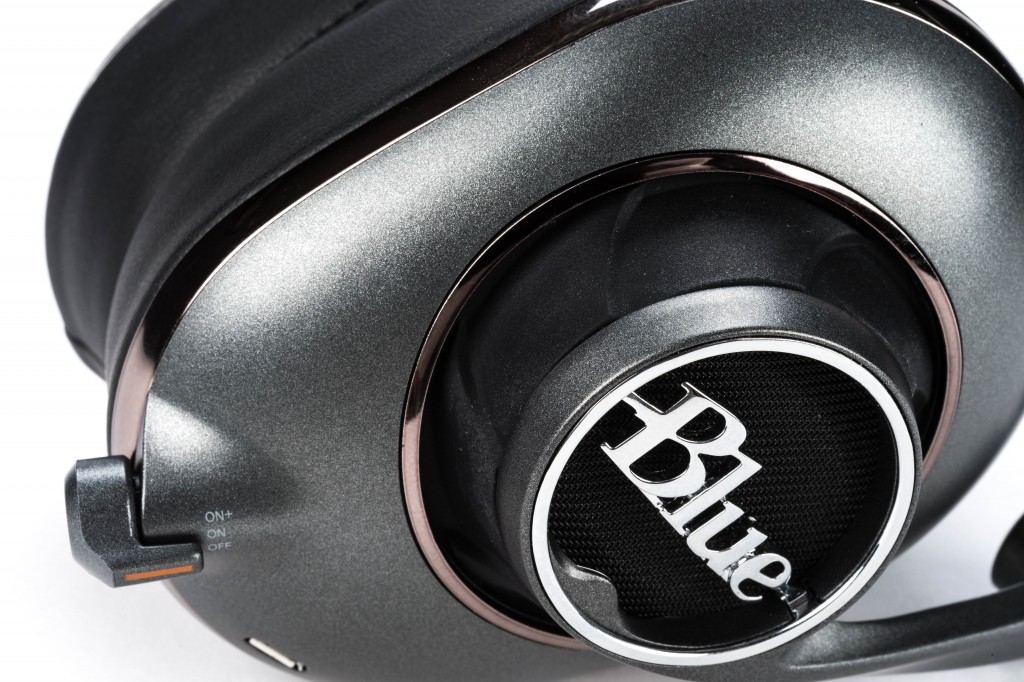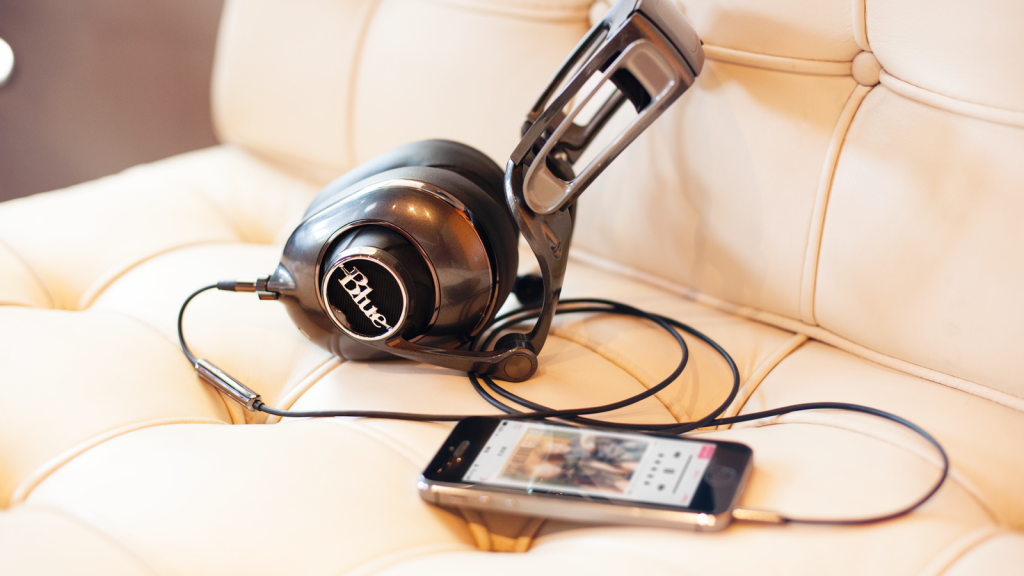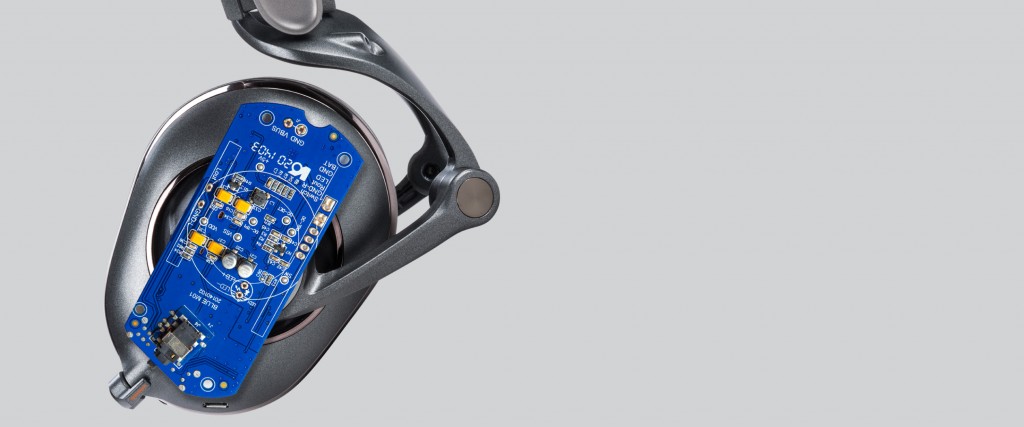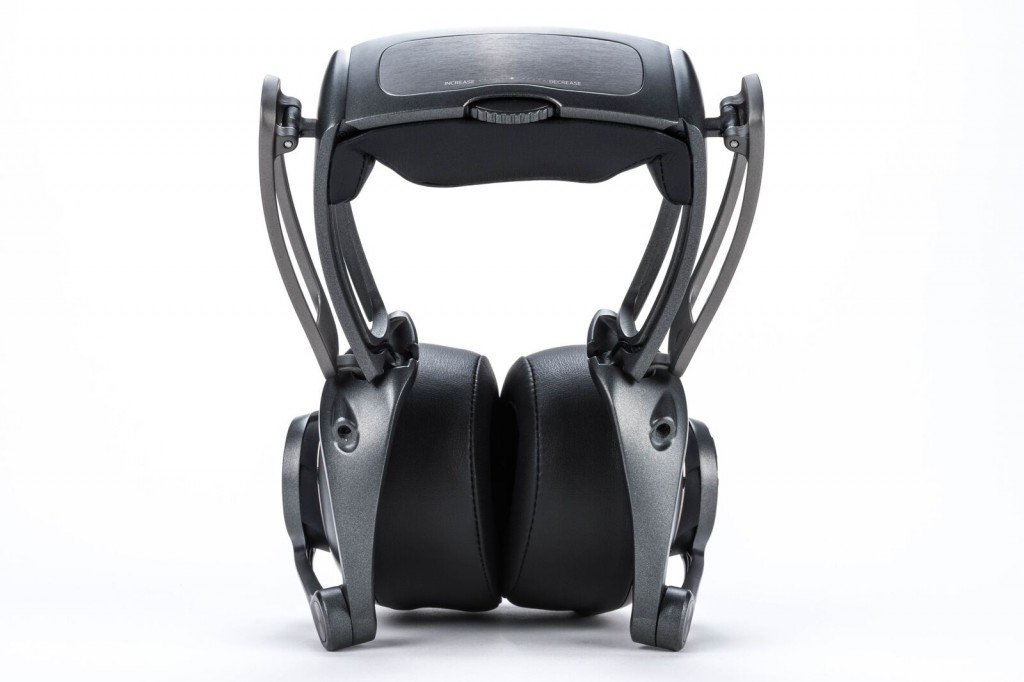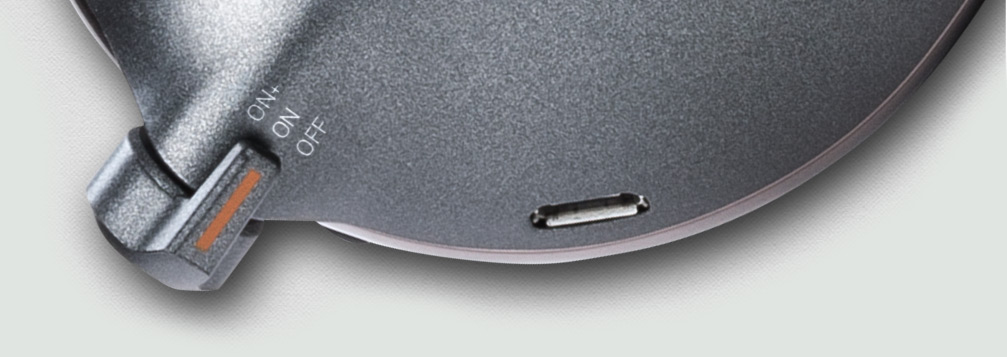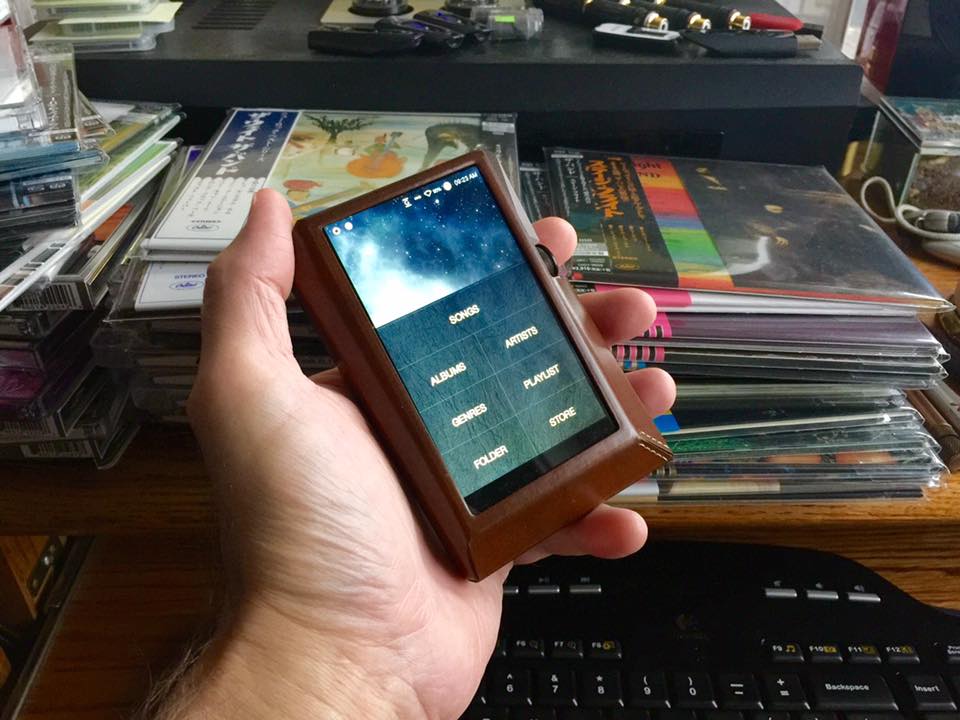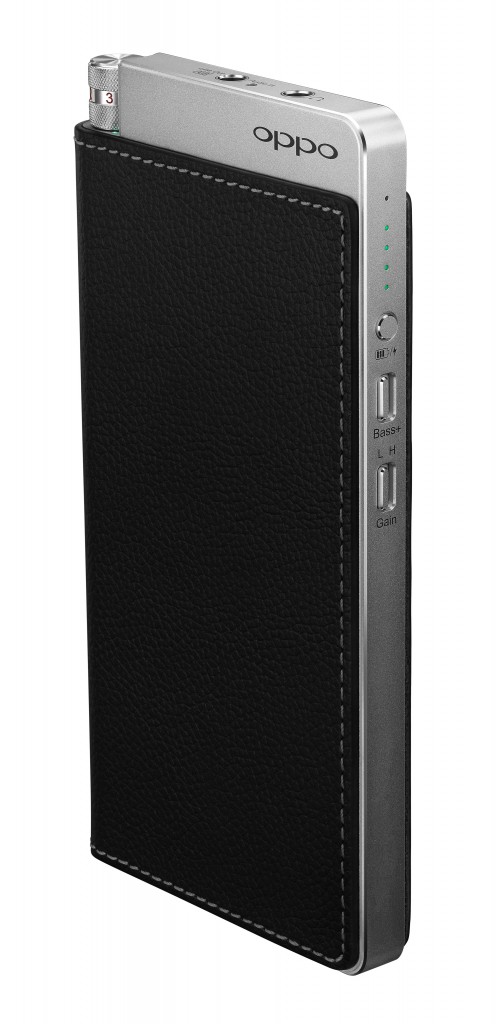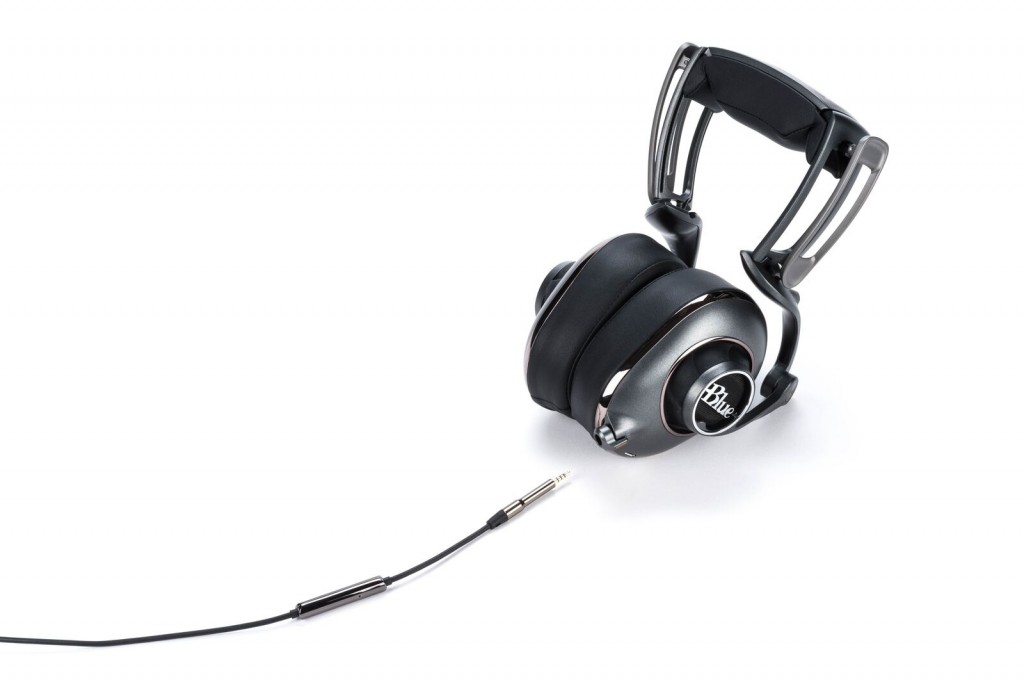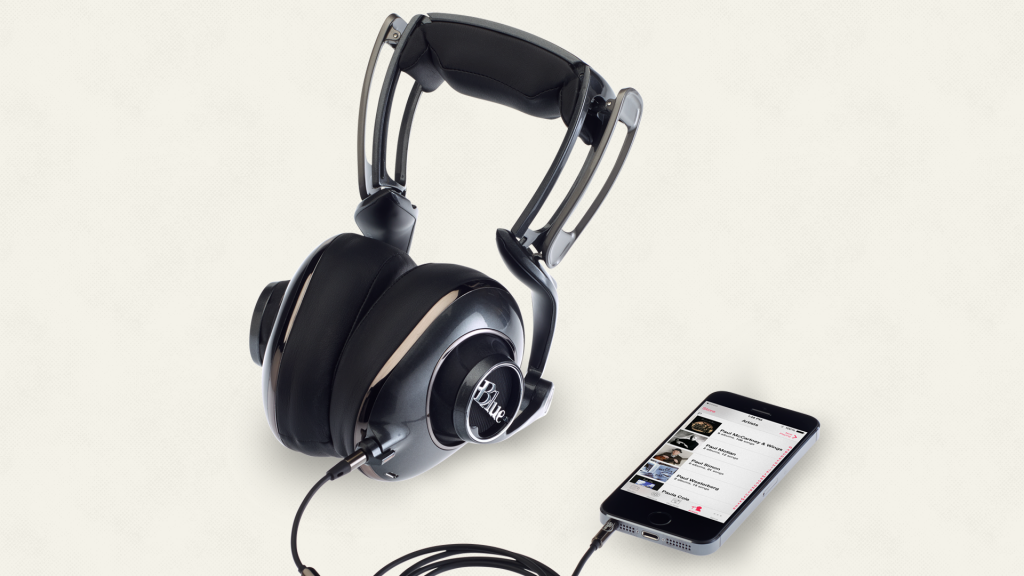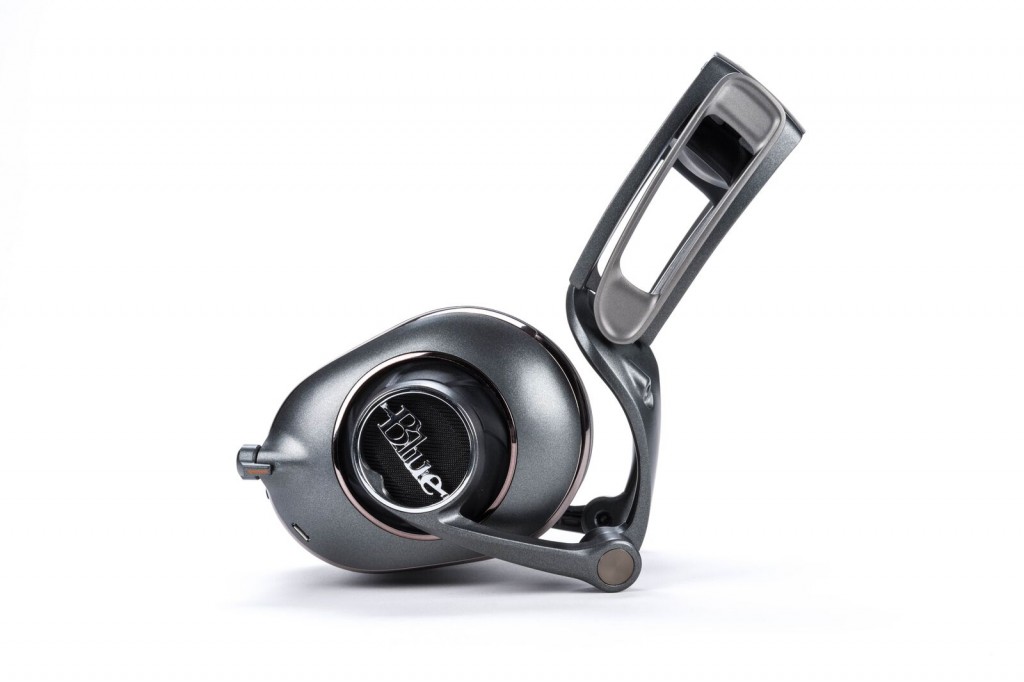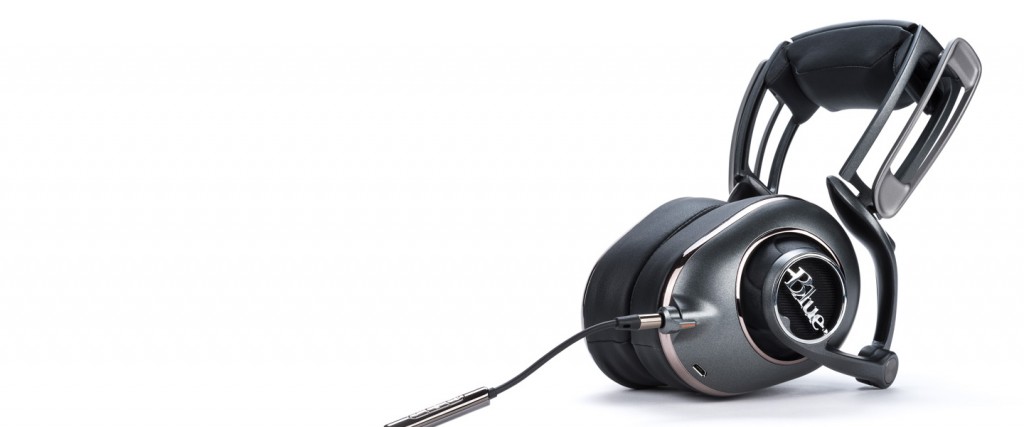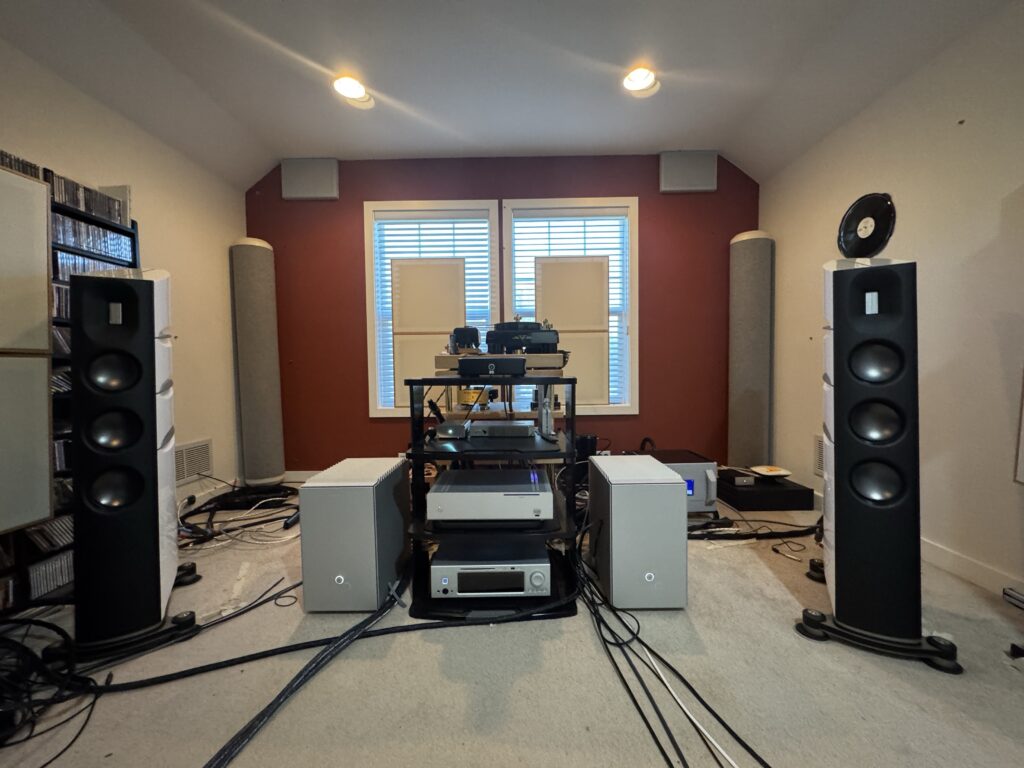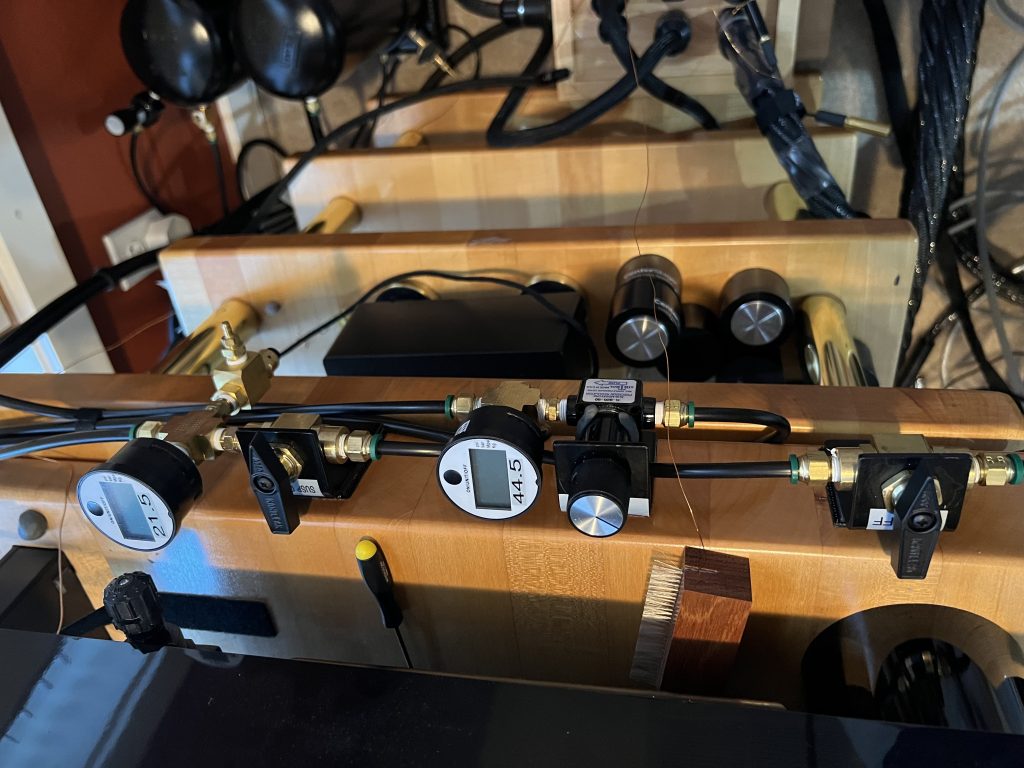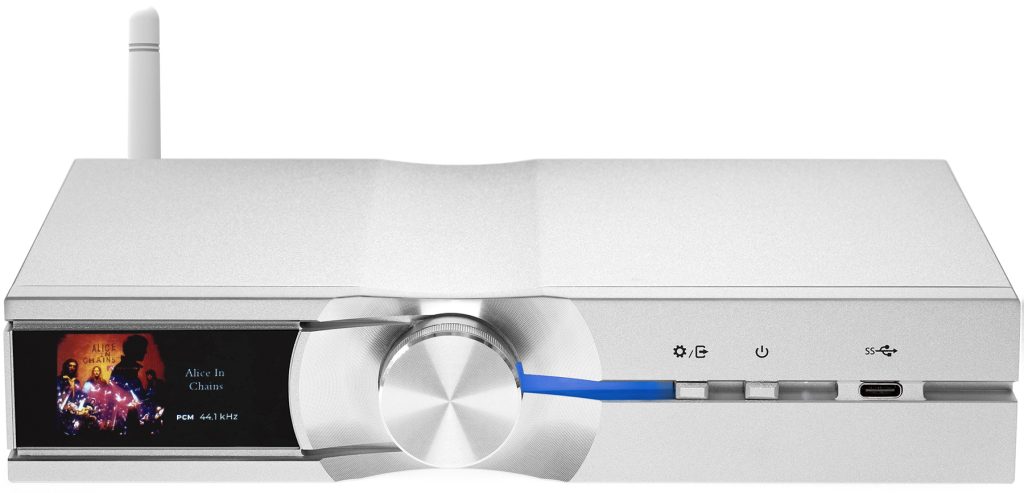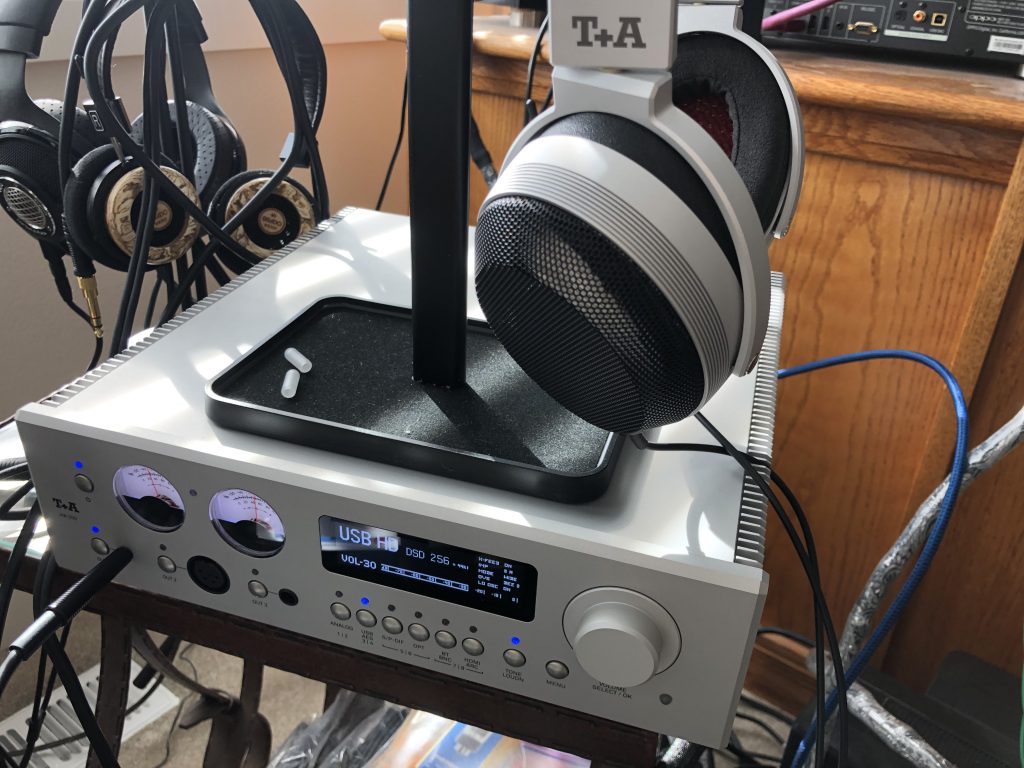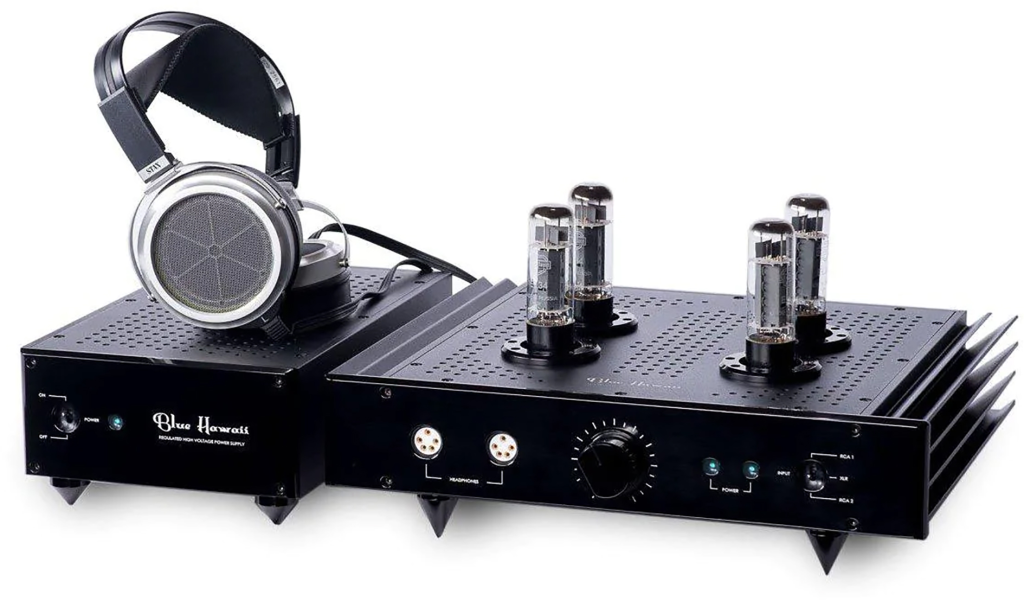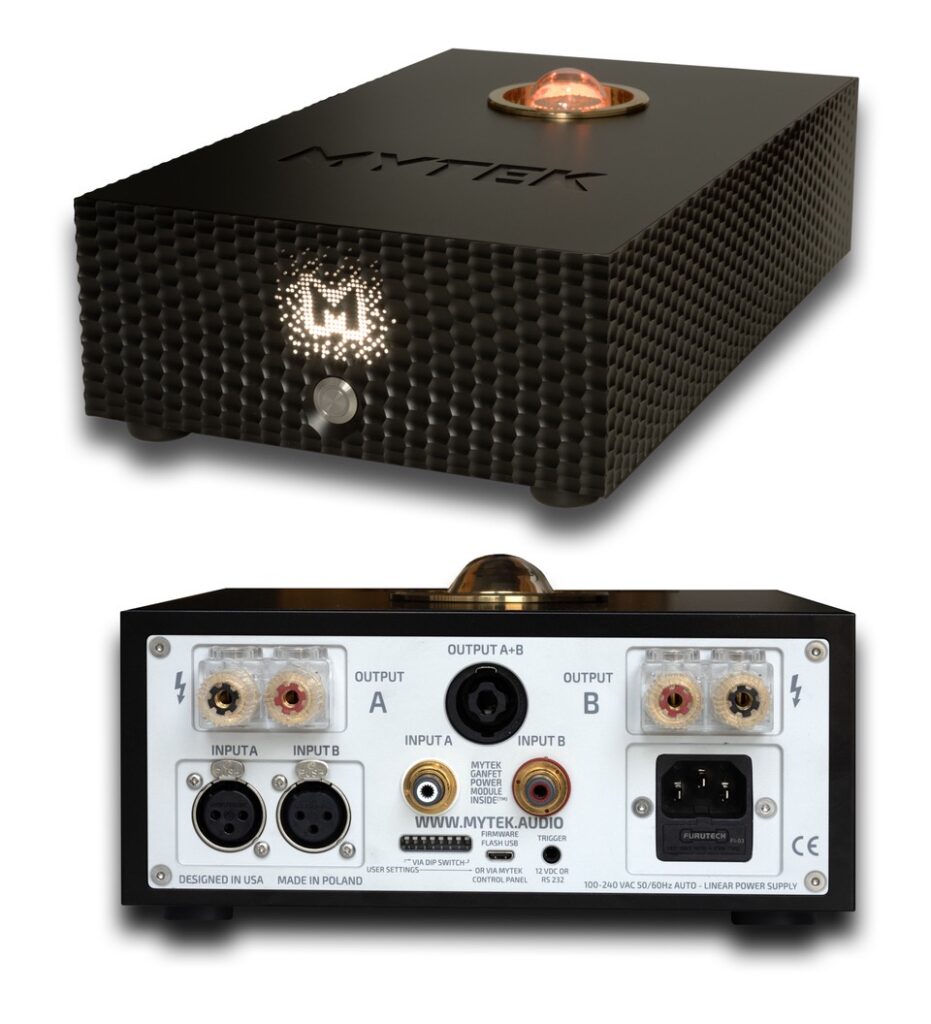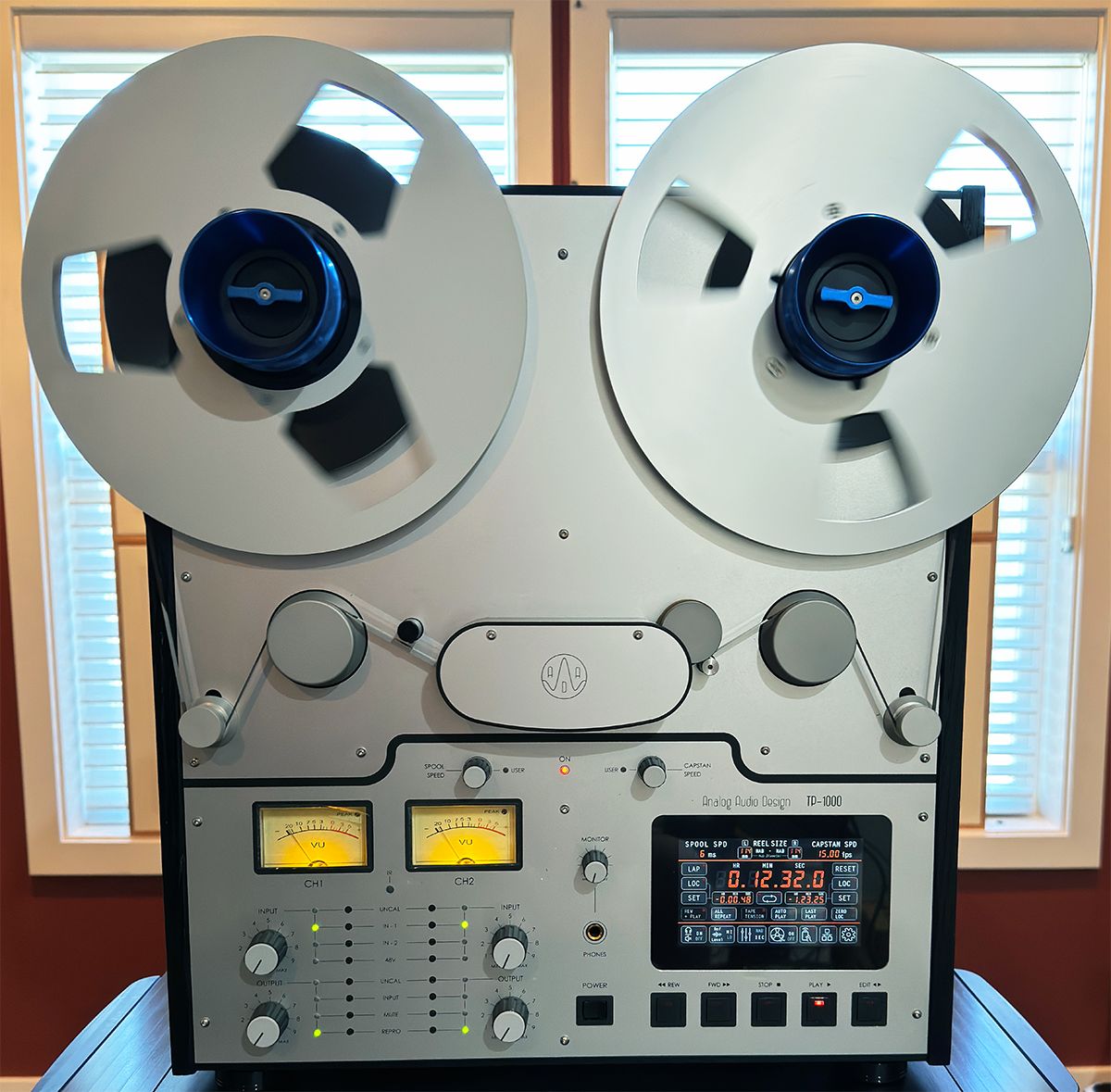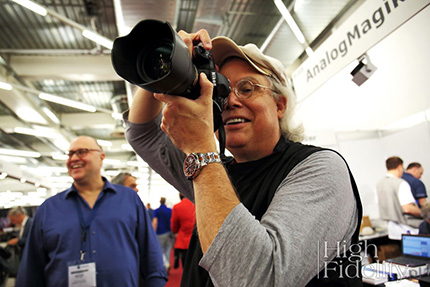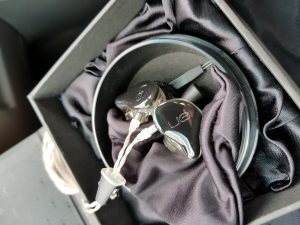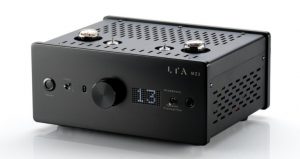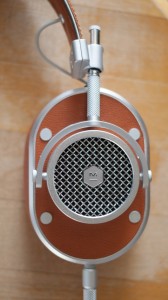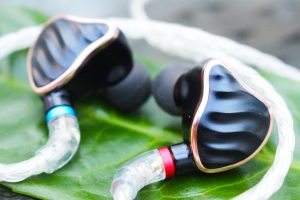And now for something really different, with a set of reflections that are short, sweet, and right to the point.
Last May I was approached by a company I was unfamiliar with, Blue Microphones, to evaluate their new powered headphone, the Mo-Fi. (Yes, I found that name to be interesting, as well. Wonder if the folks in Chicago and Sebastopol, CA, are aware of this? Of course, that was just a nickname….) They described it as over-the-ear headphones with dedicated built-in audiophile-grade amps at a very respectable 240mW to drive the speakers, with passive mode, powered mode, and bass-enhancement mode, and all for an MSRP of $349.99. Was I interested?
Given the fact that my normal review diet includes some of the finest headphones, in-ear monitors, and headphone amps in the world, I had to think about this for a bit.
Then again, what the hell! The dedicated-power element and the relatively powerful output specifications sounded promising, it would undoubtedly appeal to folks looking for lower prices for solid 'phones, and I was going to be doing a lot of travel between May and the fall. Why not give them a shot? If they were good, they would get me through some air miles, noisy environments, and traveling times.
So I said yes. Why not?
The Mo-Fi's arrived shortly thereafter. They had great look and feel, right out of the box. I liked the dark silver-gray metal-flake finish on the housing immediately…very seductive! The highly adjustable frame (both tension and suspension can be dialed in) made it easy for me to get things noggin-right for comfortable listening.
Description
The Mo-Fi's are an over-the-ear, sealed-cushion, dynamic set o' cans with rather large 50mm drivers. What set them apart from many other headphones was their integrated "audiophile-grade" analog amp. This is rated at a respectable 240mW, and is matched to the characteristics of the dynamic drivers that the Mo-Fi's use. (Note that this is pure analog performance; the Mo-Fi's don't use DSPs to achieve amplification or the characterization of an audio signal.) The idea of dedicated amplification for speakers is not new, of course…but it is rare at this point in headphone technology, most being passive devices. This does streamline your listening, especially while flying, in that you can subtract some cables and an external amplifier if you have a mind to. There are times when simpler is better.
The adjustability of the Mo-Fi's was superior, accommodating my head quite readily. There's a "tension knob" that allows for an easily tweakable fit, something that not every headphone I've tried provides. I would rate the comfort of the sealed over-the-ears as being better than usual, with the padding providing a better fit for longer periods than some headphones that I've tried. One issue that I noticed was that your ears can become warm over time due to the effective seal of these 'phones, but that's a common problem with headphone of this type, as opposed to in-ear monitors, which allow for the natural radiation of heat from your ears.
The Mo-Fi's come with a dedicated headphone cable, with volume control and muting built in at the user end, plus an integrated microphone (handy, that!) and a standard 3.5mm stereo jack. The amps are recharged via a mini-USB jack in the headphones, with the battery set capable of providing up to twelve hours of listening on a recharge cycle of approximately three to four hours. Handy indicator lights embedded in the Mo-Fi's indicate power state and the status of charging (see the docs for details). They work very well, as advertised. Note that you can greatly extend the listening time of the Mo-Fi's if you recharge them while you listen to them. I have done so regularly while on very long (11+ hours) air flights, using the now more common USB and AC adapter charging options that many airlines offer these days. Works great, with no audible problems in playback that I noticed during my flights, although Blue Microphones does say that some circuits might introduce interference or humming. I should also mention that the Mo-Fi's are smart about power, switching off automatically if they do not detect an input signal after a time…about 30 seconds, if I recall correctly. Very nice.
The three-way power switch on the MoFi's: OFF = passive mode; ON = active mode; ON+ = active plus bass extension mode. Note the mini-USB port for recharging, which can be used at the same time as you listen.
The Mo-Fi's have a useful three-way switch at the base of the headphones where the cable connects. This allows you to choose passive mode, with no amplification, good for those times when the 'phones may be tapped out from too many hours of listening without a recharge, or for those rare sources with enough power to punch the drivers directly…or powered mode (ON), for use of the dedicated amps, with a big gain in volume…or powered mode with bass boost (ON+), to deliver real beef. I tried all three, but favored the bass boost mode, because it was usually the most toothsome when it came to giving me something closer to a full-range experience.
Specifications (from the Blue Microphones Mo-Fi Web site)
Amplifier
- Output power: 240mW
- THD+N: 0.004%
- Frequency response: 10Hz-20kHz
- SNR, self-noise: <105 dB
- Noise: < 20 uV
- Battery capacity: 1020mAh
Drivers
- Type and size: 50mm, fiber-reinforced dynamic driver
- Impedance: 42 ohms
- Frequency response: 15-20kHz
- Enclosure details: Sealed enclosure with tuned damping materials
Headphones
- Weight: 466 g (16.44 oz)
- Outer dimensions (closed): 21mm x14mm x12mm (8.27" x 5.51" x 4.72")
- Outer dimensions (open): 18mm x 29mm x 12mm (7.09" x 11.42" x 4.72")
- 1.2 meter audio cable with Apple iPhone/iPad controls including inline microphone
- 3 meter audio cable
- 1 meter USB charging cable
Listening Notes
The stellar Astell & Kern AK380…pushing the MoFi's to their limits! (Photograph by Robinson)
I've spent months with the Mo-Fi headphones now, putting them through a real workout both at home and on the road. During that time, I've used the following combinations of sources:
- Mo-Fi's with my iPhone 6+ listening to my library of iTunes-compressed sources. Yes, ugly and limited, but the only source for some recordings, and also listened to so that I could evaluate this common musical source.
- Mo-Fi's with my iPhone 6+ feeding my Oppo HA-2 portable DSD DAC and headphone amplifier, and thence to the headphones.
- Mo-Fi's with my Astell & Kern AK240 DSD DAC and headphone amplifier, and on to the 'phones.
- Mo-Fi's with my Astell & Kern AK380 DSD DAC and headphone amplifier, and from there to the 'phones.
- Mo-Fi's with my ALO Audio Continental DSD DAC and tubed headphone amplifier, on so onwards.
The Oppo Digital HA-2 portable headphone amp with DSD DAC (photograph courtesy of Oppo Digital)
These combinations involved me listening to the Mo-Fi's with everything from iTunes compressed sources to high resolution PCM to up to Quad DSD recordings, which represent my reference source format. All genres that I have were used: Classical, Jazz, Rock, Alternative, Industrial-Pop, Pop, etc. My impressions are therefore based on a wide-ranging experience with these headphones, and many hours of listening.
Cutting to the proverbial chase, my time with the Mo-Fi's was a real kick, and a genuine benefit, particularly while traveling. Their sound is typically sealed-can dynamic, of course, being punchy, warm, and organic. You won't get the sort of spaciousness and detail that you'll get with an open-back design (planar or stats), but you will get decent harmonic richness with very good bass extension in the bass enhancement mode. Upper frequencies were solid, without being able to deliver the sort of atmospheric quality that higher-end headphones do. I did get better high-frequency extension with the AK240 and AK380 and DSD sources, especially with Double and Quad DSD, or high-resolution PCM sources like Daft Punk's Random Access Memories, and so better sources do lead to better spaciousness with the Mo-Fi's. You may want to keep that in mind, and concentrate on higher resolution sources if that's a key audio virtue for you.
It's very definite that the dedicated amp in the Mo-Fi's allowed me to turn down my source devices, so that I didn't have to drive them at 90+% of their native amplifying capacity. Most of the time, I was down into the 40-50% range at the source end, which helps to minimize overdrive and any possible distortion. That's very important to the best performance in audio playback, including headphones. There was more ease and naturalness of presentation when I was able to dial down in this way. (This is true of my other headphone amps, of course, but this is done without separate devices, and thus makes traveling with the Mo-Fi's much easier.)
The dynamic punch and sealed can design was particularly good on the road and in the air. The setting is everything here: Airplanes are a particularly high noise setting, with trains and cars coming up behind. I have flown with a number of headphone and in-ear monitors over the years, including noise-cancelling models. Some were better than others in keeping the background noise on a flight to a minimum; none did that completely, of course.
The Mo-Fi's sealed design with their effective pads kept the worst of the background trash out of my cans, especially when I was patiently enduring the flight safety presentations. (George Carlin was right about those.) Only my JH Audio Pro 16 in-ear monitors were in the same league for cutting out background noise. (They were cooler on the outer ears, but warmer on the inner ears…an inevitable tradeoff.) The Pro 16's lack dedicated powered amplification, of course, and so I always prefer to listen with those via either the ALO Audio Constellation or the Oppo Digital HA-2. Once airborne, I found that my listening was reasonably unfatiguing…this is a comfortable pair of headphones…allowing me to relax and read while listening to my music. The dedicated amps were a very significant improvement, and preferable to passive listening.
The long battery life of the Mo-Fi's, extended via USB or AC power connections in flight, prolonged my listening on long flights…those over four hours. Even on very long flights of five hours or more, the Mo-Fi's did not tap out. The championship test was on a non-stop flight from Portland, Oregon, to Amsterdam. No problems at all. I arrived with ears that weren't worn out, and without any sign of "headphone headache." That's an accomplishment.
Even for casual listening around my home…including while taking baths (yes, I listen to a lot of music it the tub, amigos)…the Mo-Fi's have proven themselves to be indispensable. It's bloody handy to be able to grab a pair of 'phones on the fly, and not have to grab a handful of other equipment and cables…plus find the space to put it all…and just get on with my music.
Which is what this is supposed to be about.
Quibbles
Well, there is one caveat that I would issue about the Mo-Fi's. This is one that Blue Microphones notes in its docs: You'll want to be careful about having the Mo-Fi's on when you switch on amplified or amplified plus bass extension modes…you can get a definite and rather loud pop that will wake you up. I recommend that you turn on the Mo-Fi's to the preferred amplified mode before you put them on.
Likewise, you'll want to be sure that a source device is turned way down…say 25% volume or less…before you plug your Mo-Fi's into the source. That will assure that there is no sudden pop or click before you listen. As before, don't put on the headphones until everything is plugged in and powered up.
As a very minor point, I should also note that the anodized finish on the Mo-Fi's headband system can wear if you lay it down on rough surfaces. You'll want to be careful about that if maintaining their appearance is important to you.
Otherwise, the Mo-Fi's were solid, reliable, and well-designed, and behaved as they should.
Conclusion
In short, the Blue Microphones Mo-Fi headphones provide a great deal of listening pleasure and utility. They exceeded my expectations for the quality of sound when in active, bass extension mode, and had no nasty habits. Given the price point of and MSRP of $349.99 retail, the Mo-Fi's are affordable, deliver a lot of value, and are very useful…especially for the traveler seeking excellent sound under those difficult circumstances.
Highly recommended for audiophiles on the go, musicians, and those for whom $350 is going to be the limit of a headphones budget.
My compliments to Blue Microphones for a great pair of headphones! Mine will definitely stay with me, that's for sure, amigos….
Price: USD $349.99
Blue Microphones
Phone: 818-879-5200
[All photographs courtesy of Blue Microphones/Mo-Fi, except as noted.]




